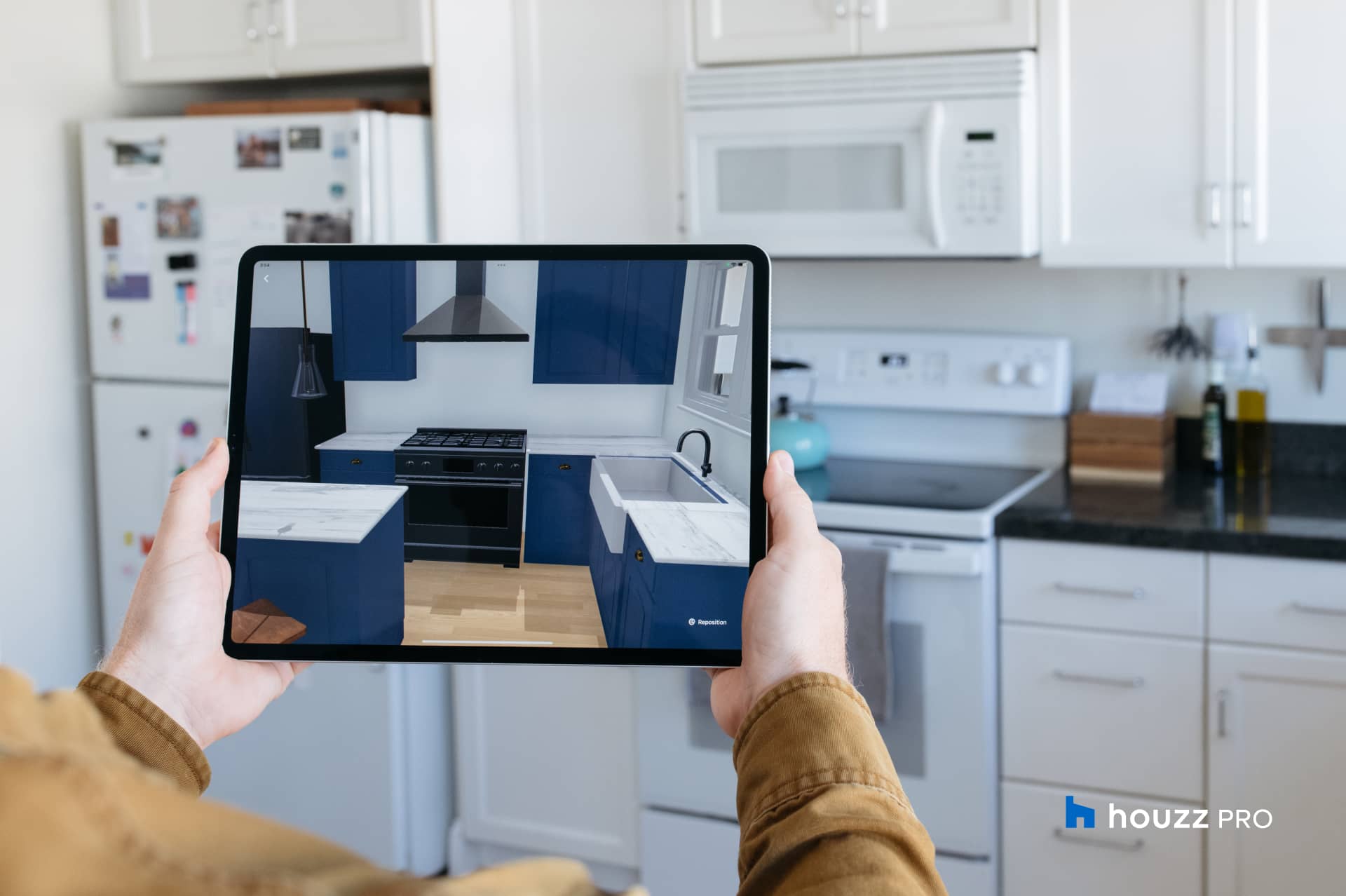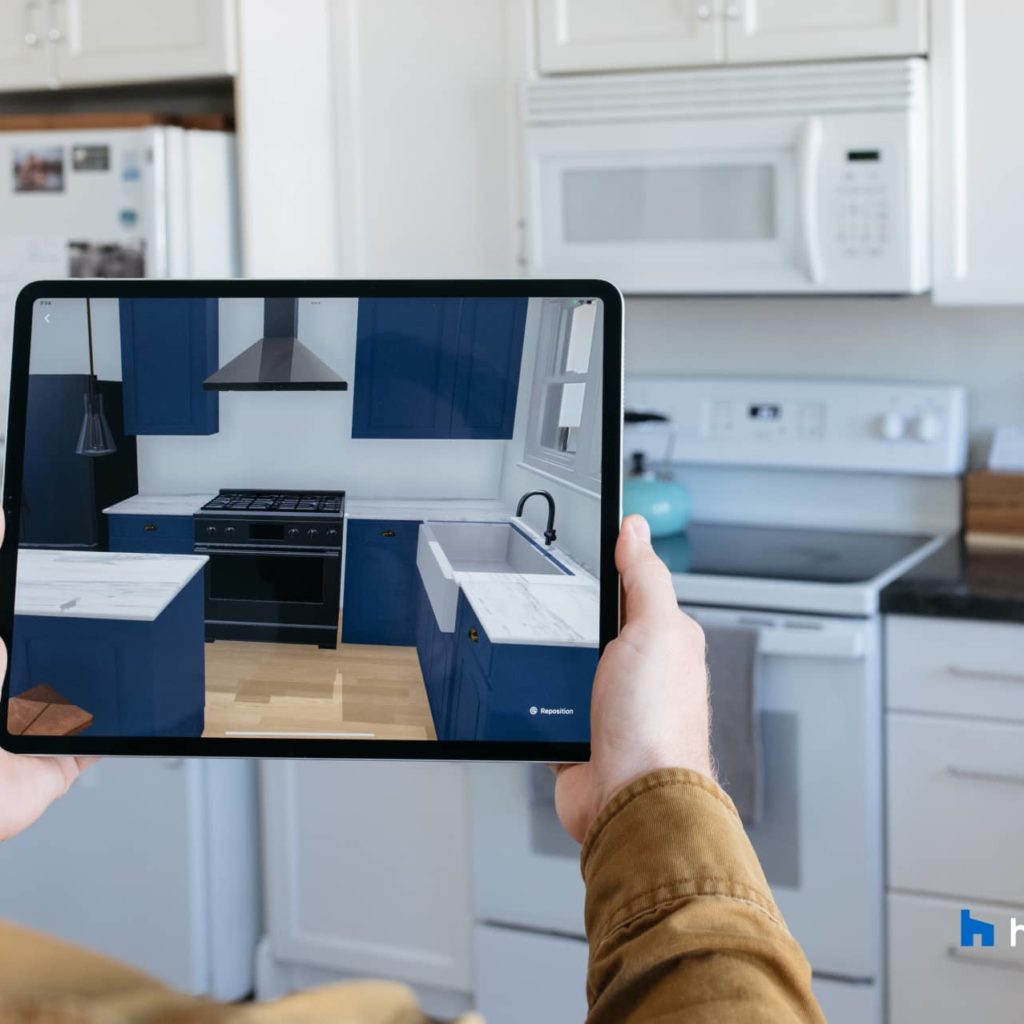Home renovation & design company Houzz today launched a new AR feature that will let home-service pros visualize finished projects in the very spaces they’ll occupy. Using the new feature through a smartphone or tablet, they can help homeowners visualize design choices on the fly.
Specifically, the feature is available in the Houzz Pro app, allowing residential construction and design pros to showcase on-site life-sized floor plans to their clients. For those unfamiliar, Houzz Pro is a SaaS offering for these professionals to manage and optimize projects – from marketing to execution.
Use cases for the new feature include visualizing walls, windows, cabinets, islands and design choices like color and texture variations. The feature is built on Houzz existing 3D floor plans, which have tripled in use over the past year the company tells us. A visual front end now brings them to life.

Bigger Bite
Stepping back, this accomplishes a few things for Houzz. First, it broadens the functionality of AR visualization. The technology has become popular for visualizing products, including everything from hats to couches. This helps consumers get a better sense of dimension and confidence.
That’s been amplified further in a pandemic when social distancing and retail lockdowns bestow even greater value on the ability to gain IRL-like product dimension remotely. For example, in eCommerce contexts, consumers can get a better sense of product fit, style, color, and texture.
Houzz has been a leader in AR visualization for all of the above reasons. But its View in My Room 3D feature focused on individual items – be it a new rug, couch, or wall art. Today’s announcement lets it take a bigger bite at entire renovation projects, visualizing final results on a room-by-room basis.
The second thing this accomplishes is bringing all of the above to home renovation pros specifically. As noted, the new tool is available in Houzz Pro, meaning the intended user includes contractors, designers, and other home service pros that use it in service of their homeowner clients.
B2B2C
The pro-centric approach makes this a B2B2B play. As we’ve examined in light of Streem, this is an opportune approach that brings AR to consumers through the professionals that serve them. It’s also an optimal go-to-market strategy in some cases, as these pros are more motivated adopters.
To expand on that last point, home service pros can use tools like AR to differentiate themselves. This can provide an edge in their own marketing and customer interactions, as well as breed operational efficiencies. For example, they can avoid downstream headaches, such as redoing work.
That can result from consumer choices that are more informed and confident. This is analogous to AR’s use in eCommerce noted above – it’s been shown to reduce product returns because of a more confident initial purchase. Home renovation pros could benefit from a higher-stakes version of that.
“Pros have let us know that the new feature can minimize the amount of back and forth communication typically involved in the planning stage by answering questions up-front, Houzz co-founder and president Alon Cohen told us,” giving their clients confidence to move forward with the project.”
The new feature will roll out immediately to Houzz Pro uses and we’ll keep an eye on its traction in the home services vertical.




